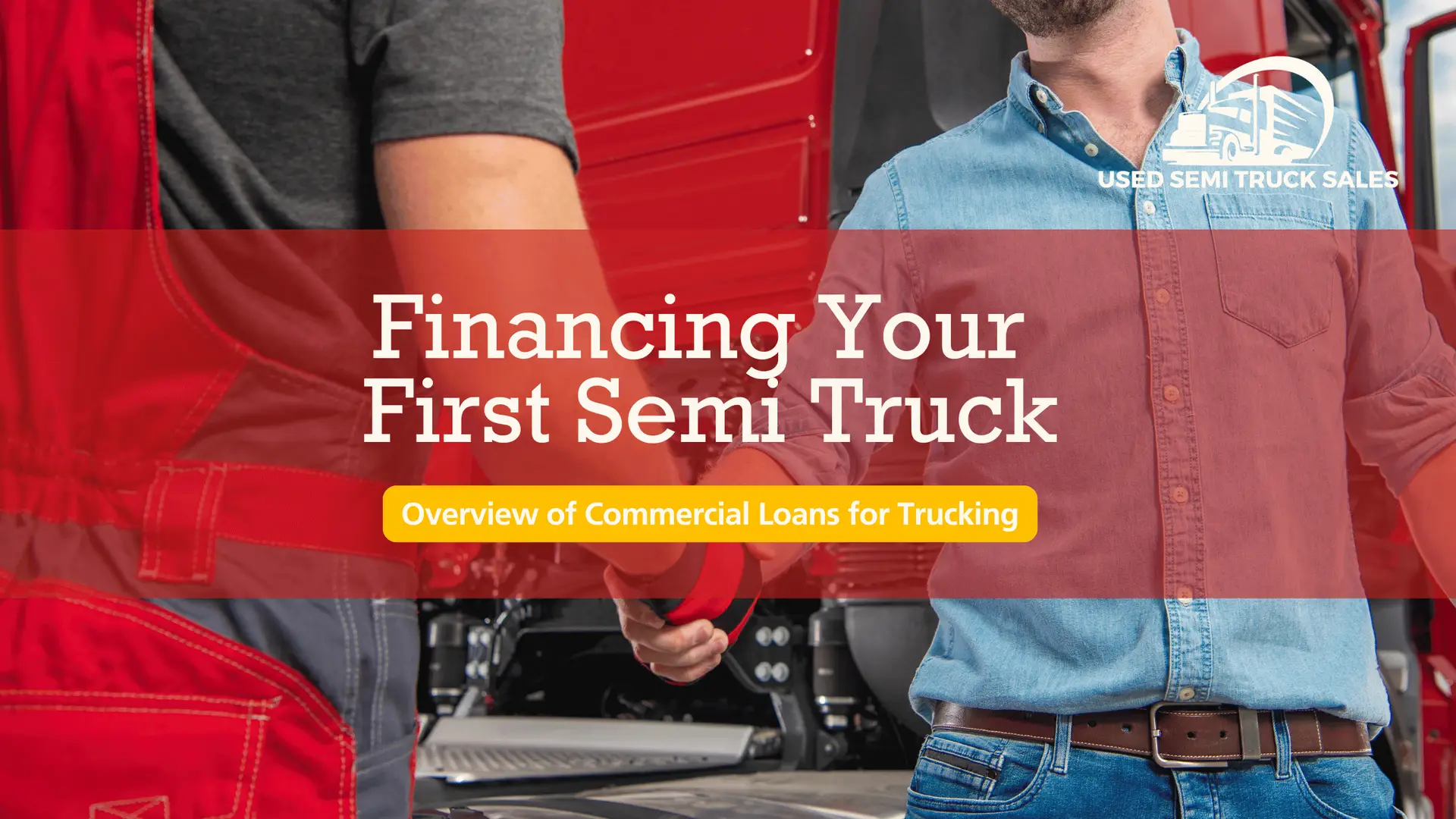Deciding to become an owner-operator is a big step with a lot of rewarding possibilities, but it starts with securing the right truck and, often, the right financing. Here’s what you can expect when looking to finance your first used truck and the key factors to consider when making an informed decision.
1. Understanding Your Financial Options
When it comes to financing, used semi-truck buyers have a variety of options, each with unique benefits. Here are some common routes:
- Traditional Bank Loans: These are the most common among dealerships. Banks offer structured loans but typically require a solid credit score, a history of reliable income from trucking (usually 2 years of having a CDL), and sometimes collateral beyond the truck itself.
- Dealership Financing: There are a few dealerships that offer in-house financing, which may be more flexible in terms of credit requirements but can come with higher interest rates and a limited availability of trucks.
- Specialized Truck Financing Companies: Companies specializing in truck loans often offer tailored packages for owner-operators with options for flexible down payments, built-in maintenance accounts, and competitive rates, even for those with credit challenges.
- Equipment Financing Loans: These loans are typically used for construction equipment but have been coming into trucking for the last few years. These loans are not simple interest loans; these are where the payment is predetermined, and the agreement is set based on the acceptance of the trucking company. These are great tools for getting the equipment you need, as they typically don’t look at rate of expansion as much as they look at the contracts that you have in place to use the equipment.
- Lease to Own Contracts: There are several companies that offer a lease to own option. These are typically low-down payments with higher-than-average payments and a balloon payment at the end of term on used equipment coming out of either a dealership or fleet to get credit challenged customers behind the wheel.
2. Down Payments and Interest Rates
For first-time buyers, most lenders will require a down payment of around 20-30% of the truck’s value. However, special programs may be available that allow lower down payments. For example, some financing plans have low down payments, such as $6,000, which can make entry into truck ownership more accessible.
Interest rates on used truck financing can vary widely based on credit score, the truck’s age and mileage, and loan terms. Typical rates can range from 10% to 25%, with higher rates for those with low credit scores. Having a company like Used Semi Truck Sales shop your loan request to multiple financial institutions can be extremely beneficial, because when the companies are competing to get the business, they offer much more attractive terms to get the business.
3. Maintenance Accounts and Warranty Coverage
Some financing programs now offer added benefits, such as a maintenance account or comprehensive warranty. For instance, a built-in maintenance account can cover repairs and preventative upkeep—this not only saves out-of-pocket expenses but also keeps your truck on the road, reducing costly downtime.
Extended warranties are also available, offering peace of mind by covering significant repairs during the loan term. This can be a valuable addition, especially when starting with a used vehicle, which may have more wear and tear than a new model. When financing, you can include most extended warranties into the financing so there is a much more manageable monthly payment increase instead of paying all upfront. The average increase in monthly payment on a 3-year commercial loan is around $300.
4. No Credit? No Problem
For many first-time buyers, credit history can be a concern. Fortunately, some financing programs are designed specifically for those with limited or challenged credit backgrounds. Lenders specializing in truck financing may not require traditional credit checks, instead considering factors like income stability and employment history.
5. Creating a Realistic Budget
Besides the truck loan, owner-operators need to consider the full cost of ownership, including fuel, insurance, maintenance, and licensing. Building a budget before signing any financing agreement will ensure that monthly payments are affordable. It can also be beneficial to set aside a cushion for unexpected repairs or market fluctuations. We have seen huge success in companies that keep $12k-15k on hand per truck for maintenance and repairs. This is not something that you would need to have when purchasing your truck necessarily but setting aside a percentage of your income in a separate account for this is best practice.
6. Key Steps to Prepare for Financing
To secure the best financing terms, be prepared with the following:
- Proof of Income: Lenders need assurance that payments can be made consistently. Have pay stubs, bank statements, or tax returns ready.
- Down Payment: Being upfront with what you would like your down payment to be and what you would be able to come up with if required is important. Remember that showing a minimum 20% down is very attractive to a bank and typically where a dealership is going to want to be before sending it over to outside financing.
- Business Plan: Knowing where you are going to put the truck, what business name you’re going to put the truck under, the DOT and MC number of the authority you are going to drive under, business references that the bank can reach out to, and a solid history of what you have done is something that banks are asking for more and more in these difficult times in trucking. Having that prepared before asking for a loan is an easy win for you when they are looking at your application.
- Copy of your CDL: While having your CDL is not required by all financial institutions, there are a fair amount that want to have that and certainly all are going to give better terms if you have that. Making sure that your CDL is included with your application is something that will help get your application approved.
Financing your first used truck as an aspiring owner-operator is an achievable goal with the right information and preparation. Understanding your financing options, choosing a manageable loan, and creating a realistic budget are all essential steps to becoming a successful owner-operator. Whether you’re aiming to gain independence or control over your earnings, the right financing choice can make your journey smoother and your business more profitable.



Leave a Reply